
Ratios of the 31 tone system reach eight digits, and the comma relations make notation even more awkward as new double-flat notes can specify pitches lower than sharp and double-sharp notes placed three staff positions below them, as shown below.



At the egdes of this system we find the interval of a quadrupally augmented second, between
G and A
and A .
These tones are color coded below to show their close relationships with the end tones F and B of the
diatonic naturals (as well as E
.
These tones are color coded below to show their close relationships with the end tones F and B of the
diatonic naturals (as well as E and
C
and
C of the 19 tone system).
of the 19 tone system).


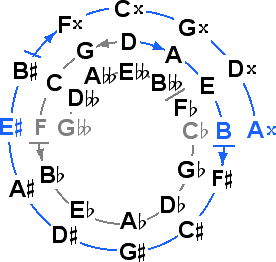
Quadrupal augmentation makes this interval much wider than it appears in terms of raw staff distance.

The quadrupally augmented second from G up to
A
up to
A is in fact similar in size to the augmented
fourth of the diatonic naturals, F up to B.
is in fact similar in size to the augmented
fourth of the diatonic naturals, F up to B.


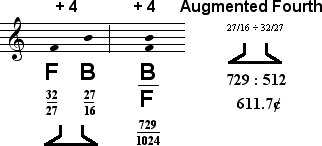
Comparison of these systemic intervals shows that quadrupal augmentation of a second makes it larger than a fourth augmented only once.



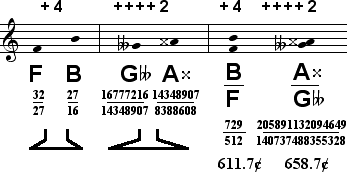
There are also other new intervals, quadrupally diminished fourths, occuring between end tones
D up to G
up to G and A
and A up to D
up to D .
.


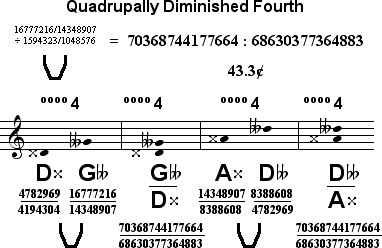
These new intervals sound very much like the halfsteps of the diatonic naturals, which occur in the analagous positions of the subset.


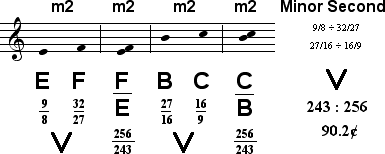
Side by side comparison of these intervals shows the qualities of the intervals are a better guide to their sound than raw staff distance, as a minor second is still a bit larger than a quadrupally diminished fourth.




The placement of these quadrupally diminished fourths within the scale show that the 31 tone system has special significance, with these two new intervals recalling the two diatonic halfsteps of the diatonic naturals.

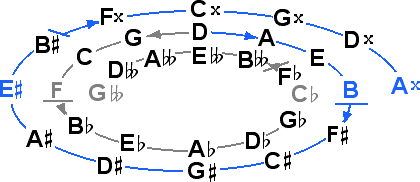
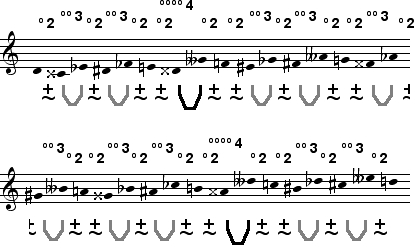
The 31 tone system has 19 Pythagorean commas, whereas 19 tones has 7 commas. A numerical pattern begins to emerge. Still larger systems give greater numbers of commas, other new and interesting interval qualities, and further evidence of a numerical series at work.
NEXT: 43 Tones